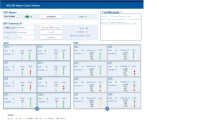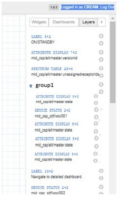Details
-
Feature
-
Must have
-
None
-
Obs Mgt & Controls
-
-
-
5
-
5
-
13
-
2.6
-
Team_CREAM
-
Sprint 5
-
-
-
-
12.6
-
Stories Completed, Integrated, Outcomes Reviewed, Demonstrated, Accepted by FO
-
-
Taranta Team_CREAM webjive
Description
To enable productive use of Taranta in defining complex dashboards, dashboard developers need a way to group and ungroup widgets. A group can be placed, dragged, resized as a single item in the canvas and can be moved up/down the layers as if it were a single widget.
See the acceptance criteria for a possible solution.


